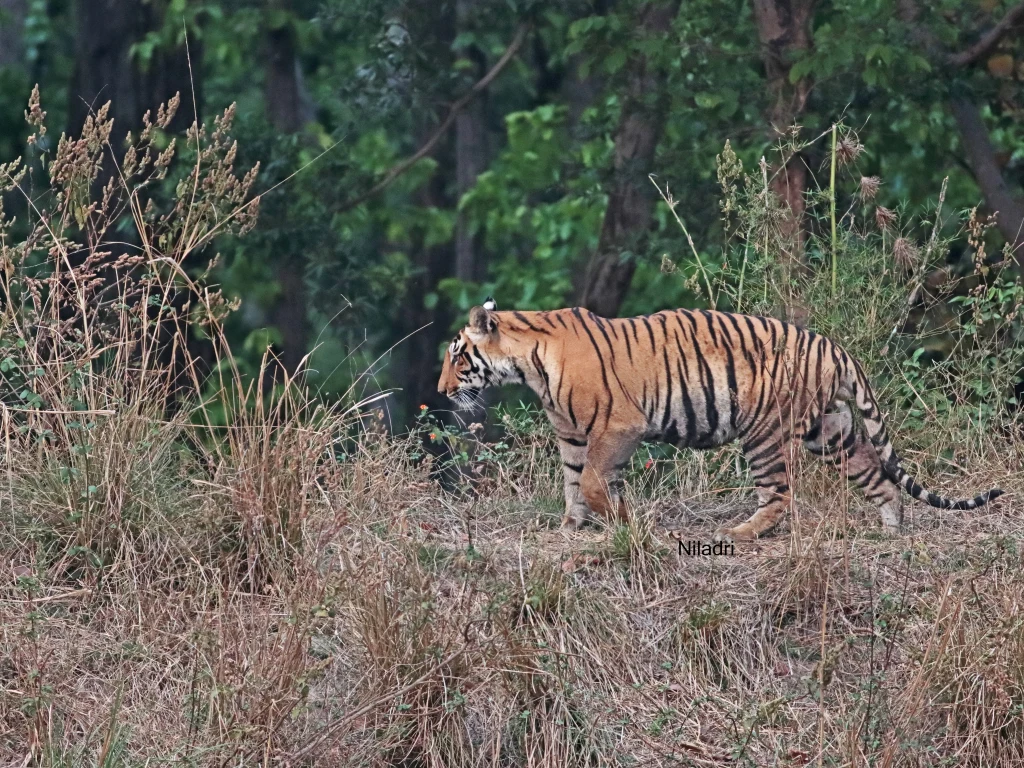Tigers are magnificent creatures known for their grace and power. India, home to approximately 1,700 tigers, holds a significant portion of the world’s tiger population. However, these majestic beings are often portrayed as fearsome man-eaters due to their killer instincts. Statistically, tigers have been responsible for more human fatalities than other big cats such as lions and leopards. Although they are carnivorous predators, humans are not their natural prey. This raises an intriguing question: why would a tiger deviate from its typical diet and earn the title of “The Hunter”?
Causes Behind Tigers Turning into Man-Eaters

There are several theories as to why a tiger might attack humans, but one of the primary reasons is habitat loss. Rapid human encroachment has significantly reduced forests, the natural homes of tigers. As a result, tigers venture into villages searching for food, often leading to human fatalities. In some cases, this behavior might be viewed as a reaction to human-induced habitat destruction.
Another common reason is injury, illness, or old age. Tigers that are wounded or aging may find it challenging to hunt their usual prey, which requires speed and agility. Humans, being slower and less agile, become easier targets. This shift in prey preference often brands these tigers as man-eaters, though it’s largely a survival mechanism rather than a deliberate choice.
Understanding Man-Eating Tigers
Every tiger has its own unique story. Take the infamous female tiger of Champawat, for instance. With broken canines rendering her incapable of hunting her usual prey, she turned to humans, tragically killing 436 people. Similarly, many tiger attacks are the result of mistaken identity, where humans are perceived as their natural prey, such as deer or wild boar.
In regions like the Sundarbans, natural calamities sometimes leave human corpses unburied. Tigers, scavenging for food, may develop a taste for human flesh, further cementing their reputation as man-eaters. Despite these unfortunate incidents, it’s crucial to understand that such behaviors are often situational and not reflective of a tiger’s inherent nature.
Addressing the Issue of Man-Eating Tigers

When a tiger turns into a man-eater, it becomes a priority for forest and wildlife authorities to intervene. Capturing or killing the tiger is often debated. While shooting a tiger may seem like the easiest solution, tranquilizing and rehabilitating it in captivity is a more humane alternative. However, keeping a tiger in captivity involves significant costs for feeding and care, posing a challenge for conservation efforts.
The question arises: do humans have the right to decide the fate of a tiger, especially when the root cause often lies in human actions? Tigers are an integral part of the ecosystem, playing a vital role in maintaining its balance. Their survival is as important as ours in preserving nature’s harmony.
Conservation Through Tourism
Sharad Vats, a dedicated wildlife photographer and conservationist, has spent over 30 years observing tiger behavior. His first tiger sighting in 1990 ignited a lifelong passion for wildlife conservation. Sharad’s experiences led him to establish **Nature Safari India Pvt Ltd**, a company promoting “Conservation through Tourism.” By fostering sustainable tourism, he aims to protect tigers and their habitats while raising awareness about their plight.
In 2006, Sharad expanded his efforts by setting up one of India’s premier jungle lodges in Kanha National Park, a haven for wildlife enthusiasts. He firmly believes that lessons from tigers, such as resilience and adaptability, can be applied to leadership in both business and life.
Lessons from Tigers: Leadership and Management
Sharad Vats has encapsulated his observations in a book that draws parallels between tiger behavior and leadership strategies. By understanding a tiger’s instincts and survival tactics, readers can learn valuable lessons on resilience, focus, and adaptability. His book serves as a guide for leaders aiming to navigate challenges with the same precision and determination that tigers exhibit in the wild.
The Role of Biodiversity and Forest Conservation
India’s biodiversity is unparalleled, with forests that are home to a myriad of wildlife species. However, these ecosystems face increasing threats due to deforestation and urbanization. Tigers, as apex predators, play a crucial role in maintaining ecological balance. Protecting their habitats ensures the survival of countless other species and the overall health of the ecosystem.
Embarking on a Tiger Safari

For wildlife lovers, a tiger safari presents an extraordinary chance to observe these majestic predators in their untamed environment. India, with over 45 tiger reserves, is the ideal destination for such adventures. The best time for a tiger safari varies by region, but the dry months generally provide optimal visibility. Safaris not only offer unforgettable experiences but also contribute to conservation efforts through responsible tourism.
Challenges in Tiger Safaris
Tiger safaris in India range in difficulty, requiring patience and perseverance. Spotting a tiger is a blend of skill, timing, and luck. The experience of encountering a tiger in the wild is both thrilling and humbling, underscoring the importance of preserving their habitats for future generations.
A Shared Responsibility
The journey to coexist with tigers is a collective one. As humans, we must recognize our role in conserving their habitats and ensuring their survival. Through initiatives like responsible tourism, habitat restoration, and public awareness, we can work towards a future where humans and tigers thrive together.
Sharad Vats’ efforts remind us that the fight to save tigers is not just about preserving a species but about maintaining the delicate balance of our natural world. His life’s work, from his photography to his leadership lessons, serves as an inspiration for us all to play our part in this vital mission.

